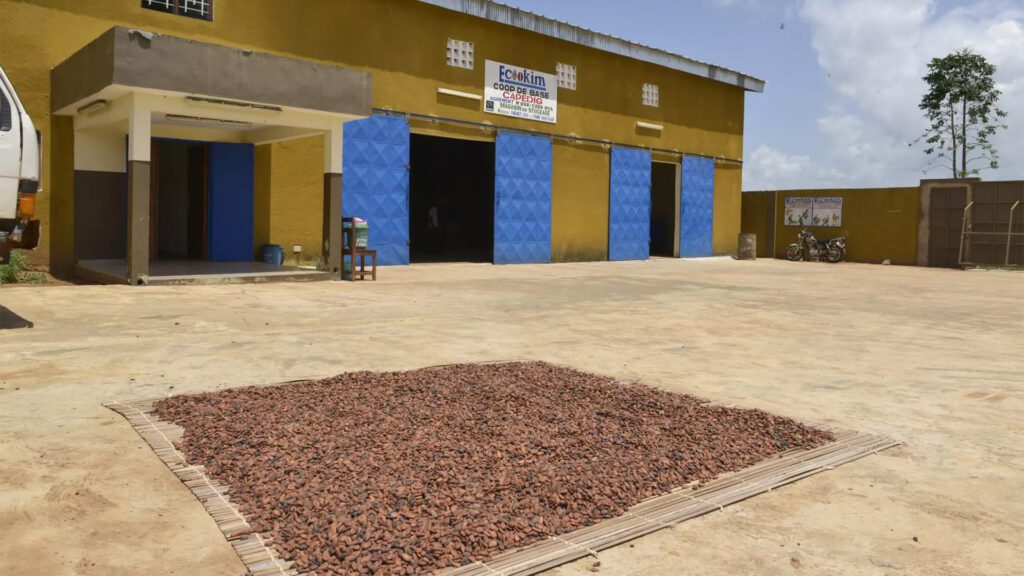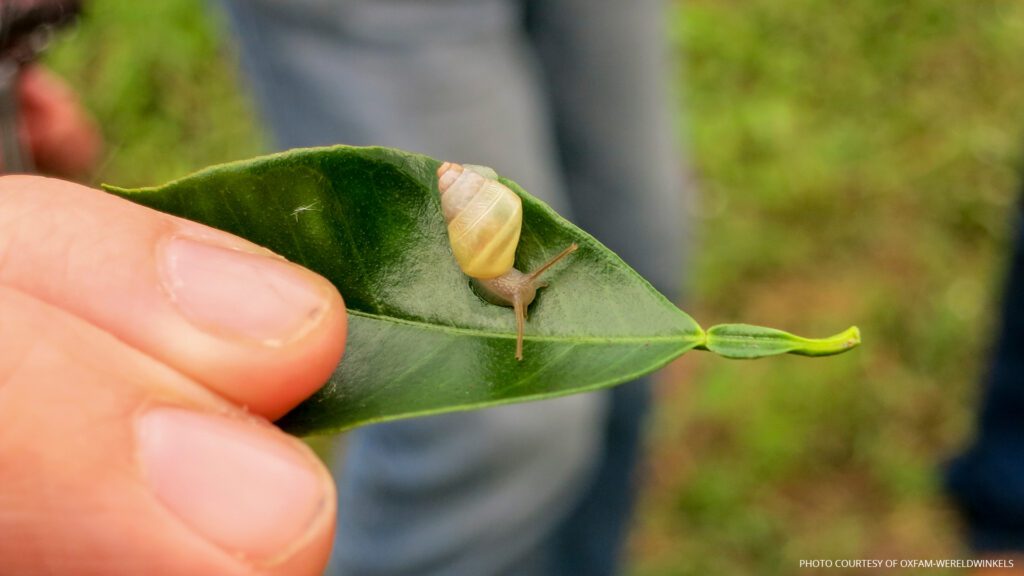Fair trade coffee: why this classic still leads the way
Fair trade coffee is the best-known fair trade product out there. If you’ve ever mentioned fair trade to someone, there’s a good chance they responded with something like, “You mean like the coffee?”
This well-known fair trade product is famous for a reason. This week we’ll talk about why drinking fair trade coffee makes such a huge difference, as well as how fair trade coffee has become the high-quality, delicious product it is!
But first, this is the fourth post in a series about Fairtrade Month in Canada. If you missed the previous posts, check out the last one, Fair trade tea: what’s behind your fave infusion? Before that, we discussed fair trade cocoa/chocolate here: Fair trade chocolate: what it’s doing for women, children & the planet. And if you missed the week before that, where I talk about fair trade sugar, check it out here: Fair trade sugar makes Fairtrade Month extra sweet!
Now that you’re up to speed, this post will make more sense.
Let’s discuss that aromatic and energizing fair trade coffee!
We’ll start out with some basics around how coffee is grown and processed into the final product that we know and love.
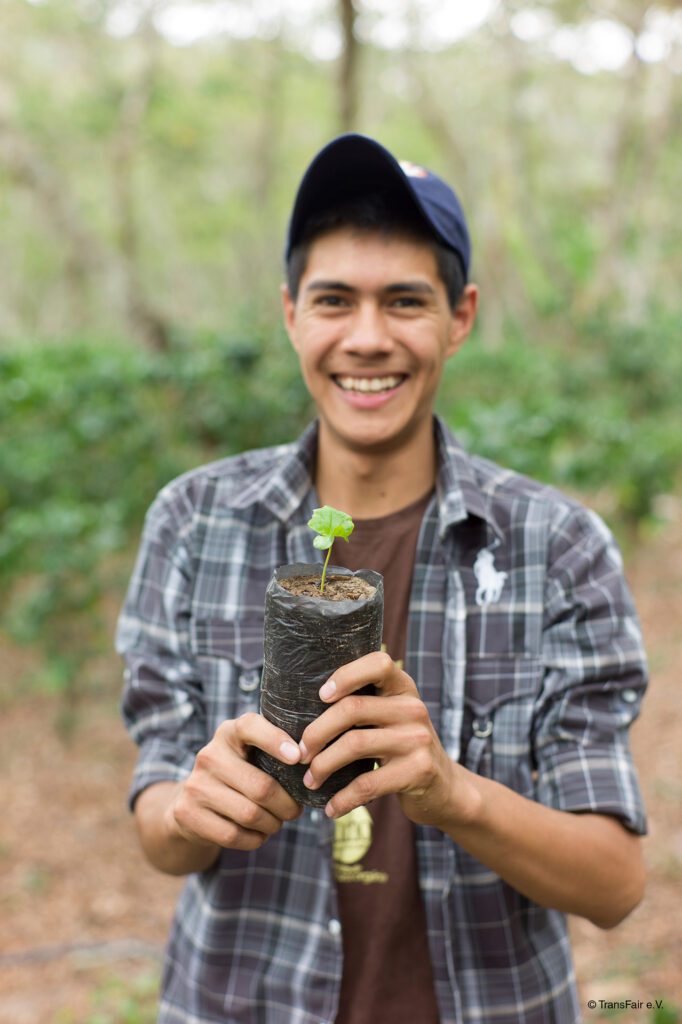
How is coffee grown?
Coffee beans are actually the seed of a small fruit commonly known as a coffee cherry or coffee berry. You know how cherries have a pit? It’s the same with coffee, only the pit is the part that we use to make our beloved drink.
Coffee cherries—fair trade or not—grow on short, bushy, tree-like plants that really like mountainous terrain. This is great news for smallholders, who are responsible for the vast majority of coffee production worldwide. Even if their farm is hilly, coffee plants don’t mind one bit!

There are two main types of coffee beans available on the market: Robusta and Arabica. Arabica beans yield a higher-quality coffee, but of course this makes them more expensive. If you’re getting a very cheap coffee, it probably isn’t made with Arabica beans. There are also blends, which are priced somewhere in the middle and have Arabica and Robusta beans mixed together. Robusta beans are higher in caffeine but don’t taste very nice, so for a good coffee, it’s best to mix in at least some Arabica beans.
The other fascinating thing about coffee is that while it’s growing, its flavour is affected by what’s around it. Something simple like the acidity of the soil can change how the final coffee will taste. Perhaps because of this, coffees from a similar area tend to share flavour notes, while the same type of coffee bean planted across the world may taste very different due to its growing environment!
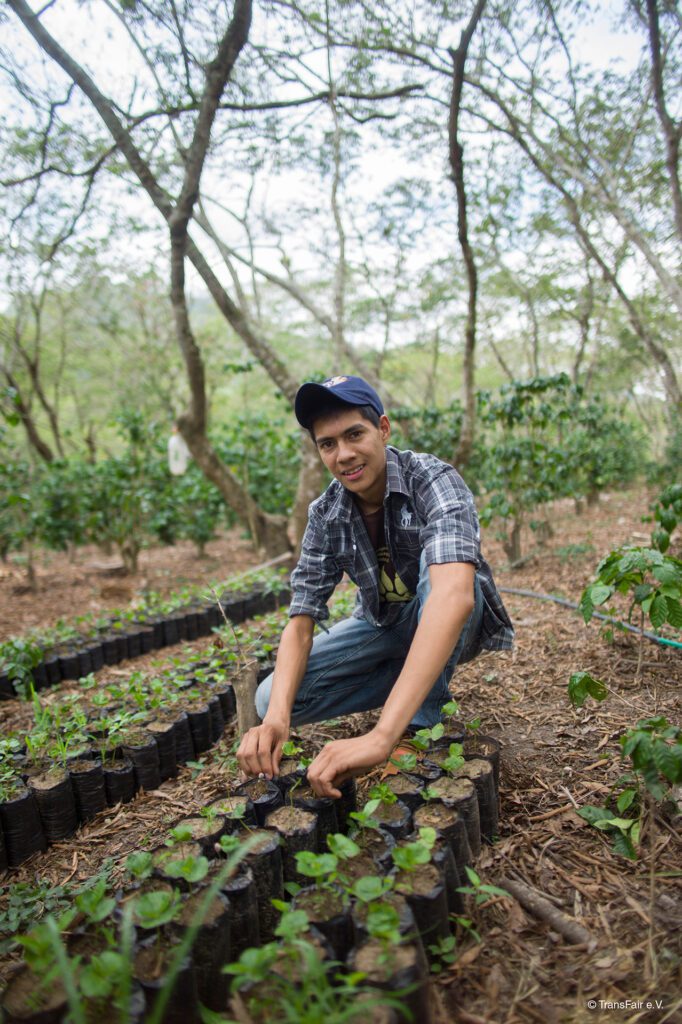
Coffee plants don’t require full sun in order to produce good coffee beans. That means that shade-growing coffee is just as good a practice—better, even, than growing in full sun, you could say. Shade-grown coffee ripens slower, which draws out the process where they develop their flavour. The slower ripening means they take on a more complex, deeper taste that is sought after by many coffee lovers.
Shade-growing is also a great way to help out the environment, which we’ll talk about next!
Is growing coffee eco-friendly?
It all depends on how the coffee is grown!
As I alluded to above, shade-grown coffee is easier on the environment. This is because shade growing requires taller trees to provide the shade. These trees add to the biodiversity of the farm and keep the soil and wildlife happier. It also favours small-scale farmers who are living in harmony with the land over plantation owners who clear-cut for a monoculture. Did you know that over 90% of the birds die when we clear-cut an area of land? That’s because we’ve destroyed their lush, biodiverse habitat and they have no way to survive anymore.
Small-scale farmers‚ and particularly fair trade farmers, focus on shade-growing coffee not only for better environmental protection, but also because they get a higher-quality coffee that way.
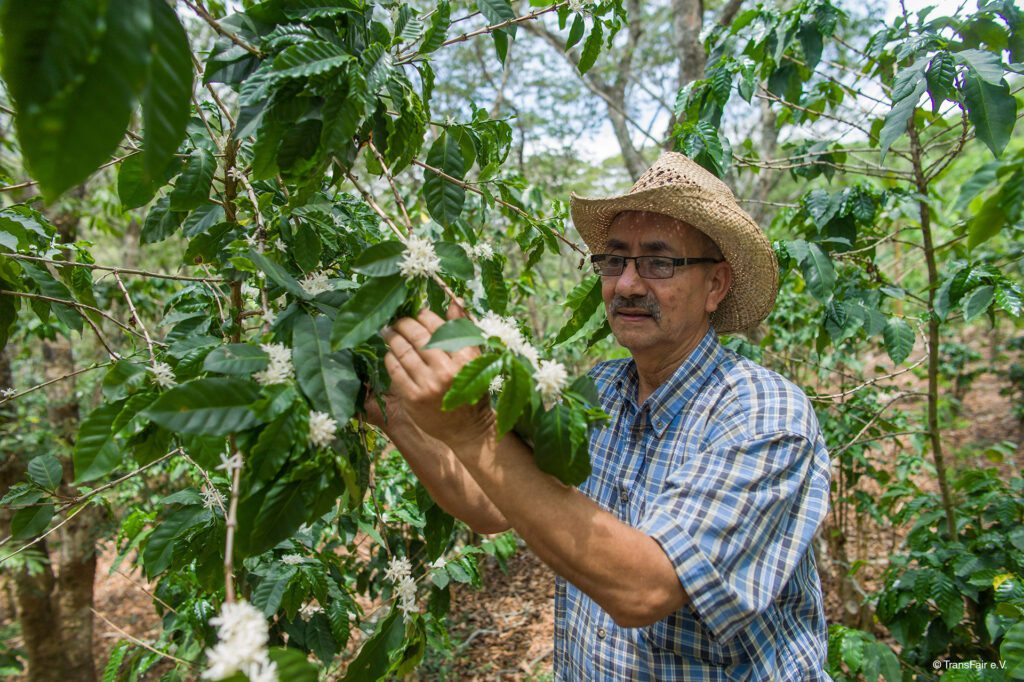
Because coffee cherries provide the best flavour when they’re ripe, it’s best to pick the fruits once they’ve turned red. If the farm is a plantation with rows upon rows of coffee plants and nothing else, picking is often done mechanically. The trouble is that coffee cherries don’t all ripen at the same time, so some of the bitter, green cherries will get into the mix, making the final product lower-quality.
That’s just one more reason why small-scale, fair trade coffee farmers are better for the planet. Hand-picking coffee cherries is standard on these small farms, which means less emissions from machines and higher-quality coffee. Everyone wins!
How coffee cherries are processed
The first step in processing coffee is to remove the cherry pulp from the bean. This step is crucial because it has to happen within 24 hours of picking, or else the coffee will spoil.
Because it’s such an urgent part of the processing, this creates problems for small, independent farmers. Farmers who can’t afford to have on-site processing equipment are forced to sell their coffee cherries to others, and quickly. This has led to exploitative “coyotes” that go around to these small farms and offer way lower-than-market prices for coffee cherries because they know the farmers are desperate. They then take the cherries to a facility, where they’re processed. When the coyotes sell the final beans, they can pocket more income for themselves, of course, because they’ve paid so little for the coffee in the first place.
This is why organizing into cooperatives is so helpful. Many smallholder farmers can band together into a cooperative. This allows them to pool their resources and collectively set up a processing facility. Farmers can bring their coffee cherries there and be confident they’re not going to spoil. This empowers farmers to have more control over the process, and to let them be more independent. No longer do they need to depend on predatory coyotes out of urgency and uncertainty.
Once the beans are out of the cherries, they must be dried, which works well in the sun. The farmer can simply spread the beans out in a thin layer on a tarp or something similar, and let the sun do its work. They’ll shuffle the beans around every so often to make sure they’re drying evenly. Often they use a rake-like tool to do this.
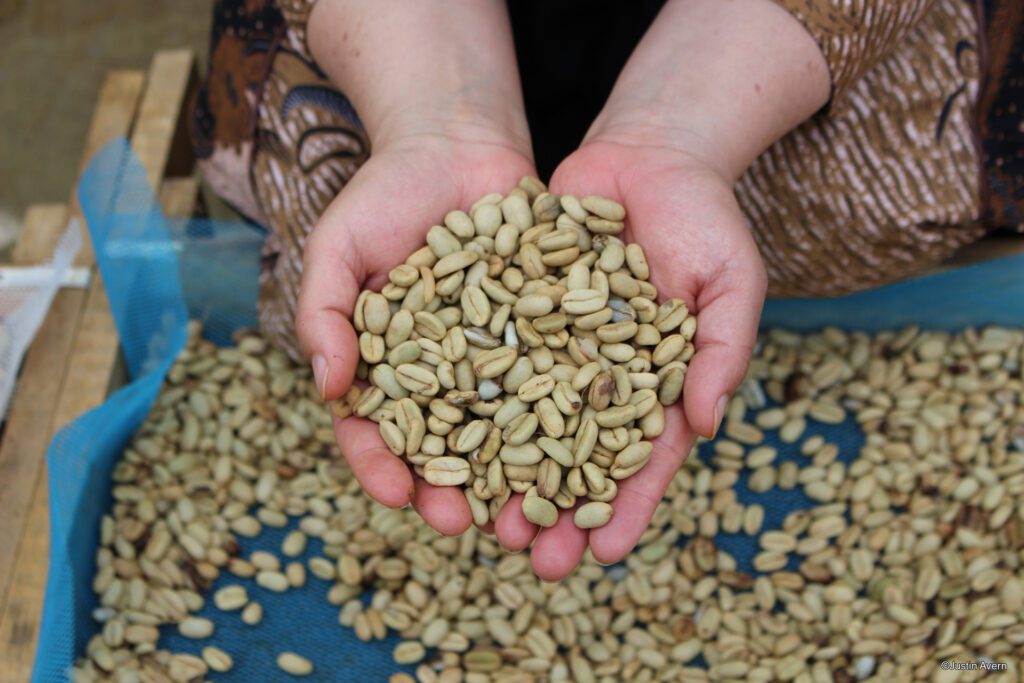
Once dried, we have green coffee beans, ready for roasting (for local consumption) or selling (if the buyers will roast it themselves). Most coffee shops prefer to have their beans roasted locally for optimal freshness. Green beans store pretty much indefinitely without loss of quality, while roasted beans are better when they’re fresher.
All of our suppliers roast their coffee on-site, for example. Then they pack the beans into well-sealed bags for optimal freshness. Ground coffee should be used within a few weeks of roasting; whole bean coffee stays fresher longer because the goodness inside the bean is released when you grind it for your morning brew!
Why is fair trade coffee better?
There are a few reasons we’ll cover, but in order to avoid writing a novel, I’ll keep it to three general ideas. Those are the farmer impact, the coffee’s quality and the environmental protection.
Farmer impacts of fair trade
I consider this to be a crucial factor, because nobody should be living in misery just so we can have a cup of coffee in the morning.
Fair trade coffee means the farmer receives a living wage, so they can cover the costs of production and have a little left over to send their kids to school, provide for their family and so on. The things we take for granted in Canada, basically.
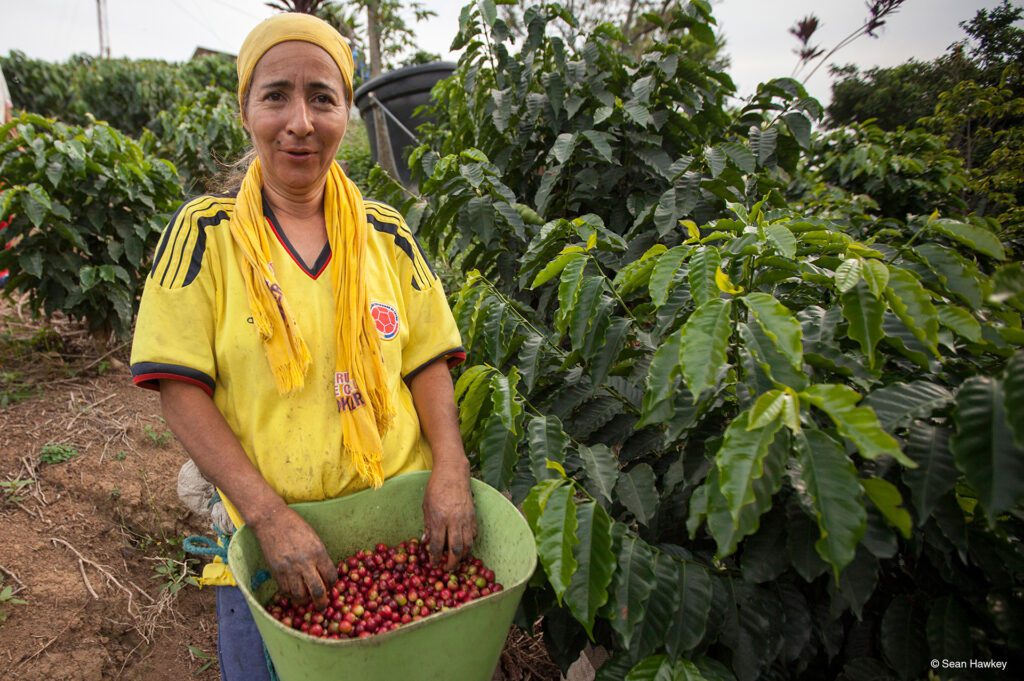
Because fair trade farmers usually organize themselves into cooperatives, they can learn from one another as well. This boosts the independence, community and self-esteem of the farmers, because they learn to be better and better farmers and have support in their community. Fair trade farmers can also access training from Fairtrade International, if they go through this certifier, and these trainings can include anything from management skills to creating organic compost for their farms.
Fair trade farmers receive a 10% premium on top of the purchase price. So for example, if I buy $10 worth of beans from a fair trade cooperative, I actually give them $11. That extra dollar is put into a fund where the cooperative saves up for whatever projects they feel are most necessary. They will democratically decide what to use it on, and in case you’re interested, fair trade coffee farmers usually decide on farmer training and agricultural tools. In some industries, farmers tend towards other uses (such as education), but we’re in the middle of a coffee crisis and farmers need more help now than ever to grow their coffee and make ends meet.
Why fair trade coffee is higher quality
Fair trade coffee is higher-quality coffee because of what goes into it.
First, as I mentioned earlier, shade-grown coffee is the default in fair trade, and shade-grown coffee has a better flavour. You already kind of knew that, right? 🙂
But what you might not know is that because many non-fair trade companies rely on coyotes to supply coffee to them, they actually have no idea where the coffee is coming from. A single coyote might hit 100 farms in a single day. All of those beans are chucked together into a bin at the end of the day, regardless of quality. Sure, the final buyer might do a great job of roasting the beans, but there’s only so much you can do with low-quality beans. Small, independent farmers usually don’t have the capacity to process, roast and taste their own coffee, so they typically have no idea what the quality of their beans actually is.
Enter the cooperative.
Many fair trade cooperatives have pooled resources to invest in cupping facilities! This means they can taste the beans each small farmer is bringing to the table. And you know what? They’re making great business choices after that! If cooperatives figure out Sophia has the best beans, they’ll tell her to train up the other farmers on how she gets her beans to taste so great! So the whole cooperative will then have Sophia-quality beans and can ask for a better price on the market to reflect that higher quality.
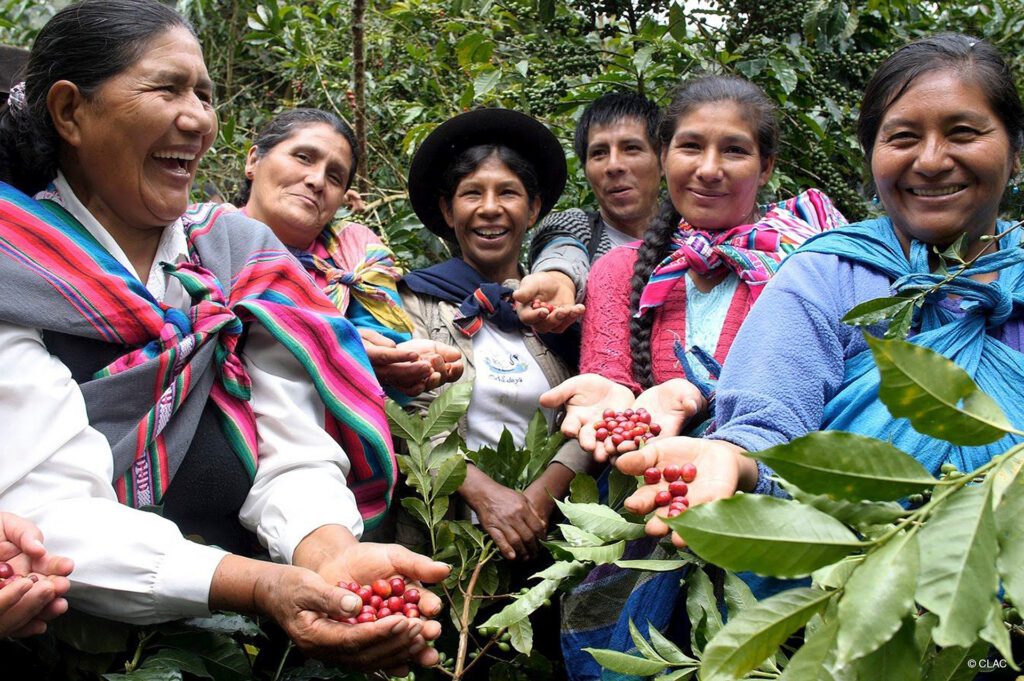
You might say, “I heard of a company that does direct trade and they know the farmers they get their beans from, and they’re super high quality. Isn’t that the same as fair trade?”
The trouble with direct trade is that it’s totally unverified by anyone except the person making the claim. What’s more, direct trade may shorten the supply chain, but it doesn’t make any claims on how the workers on the farm may be treated, what kind of extra support they may have from their buyers, or even what price is being paid to these farmers. In some cases, direct trade demands high-quality coffee but doesn’t pay the farmer as much as they need to reasonably produce these high-quality beans. Or the buyer may have very little oversight and there may be labour abuses or nasty agro-chemicals involved. Direct trade is direct, which is cool. But so is fair trade, and fair trade is also so much more!
How fair trade coffee is more eco-friendly
I’ve already covered some of the reasons fair trade coffee is greener, but let’s jump a bit deeper in.
Did you know that fair trade prohibits the use of many toxic chemicals on crops? While pesticides and herbicides are used often in conventional coffee, fair trade focuses on natural alternatives wherever possible. It also encourages building up the soil with organic compost rather than chemical fertilizers. More than half of the farmers certified by Fairtrade International also have organic certification. How rad is that?!
And not to keep harping on about it, but shade-growing coffee—which is widespread in fair trade—is better for wildlife, people and the planet overall. Keeping natural habitat for the wildlife is one thing, but biodiversity and tree planting also helps combat soil erosion and offsets carbon emissions. Did you know that smallholder farmers produce 80% of the world’s coffee, fair trade or not? Let’s ensure that these smallholders can receive a fair wage for their lower environmental footprint!
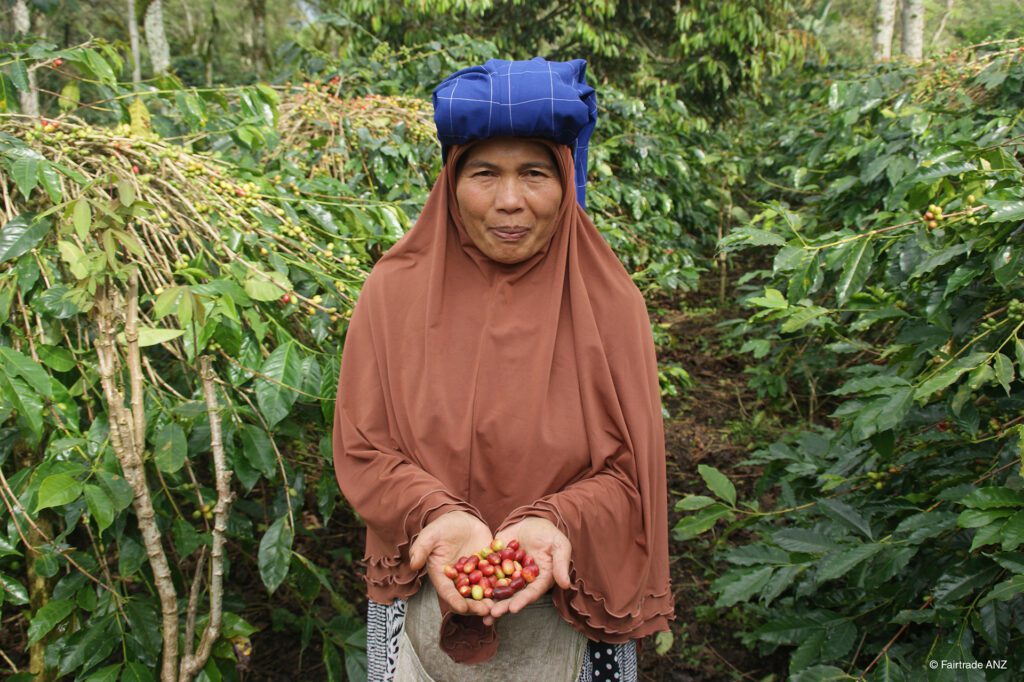
Fair trade coffee facts
Did you know that Fairtrade Certified coffee is grown in more than five hundred producer organizations, in over 30 countries?
Here are some more fun facts (based on 2018 numbers):
- 18% of all Fairtrade coffee farmers are women
- $121.7 million was paid in Fairtrade Premium to coffee producers that year
- There are 582 Fairtrade coffee producer organizations worldwide, and they represent 762,392 workers in 32 different countries
- 86% of all Fairtrade coffee comes from Latin America & the Caribbean
- 214,335 metric tonnes of coffee was sold as Fairtrade in 2018
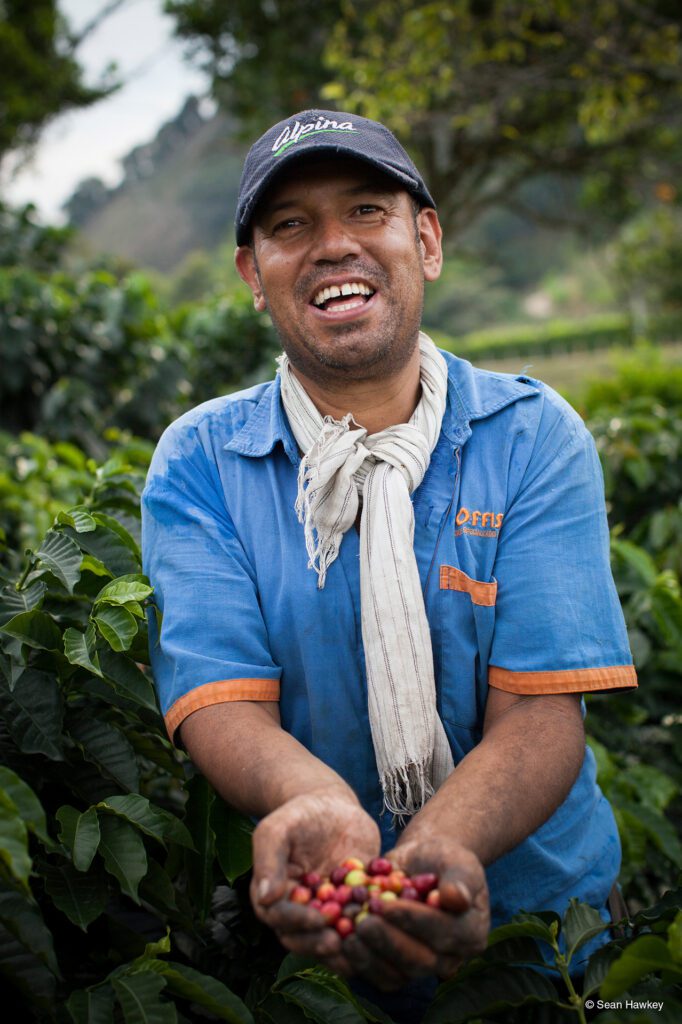
Fair trade coffee brands
In Canada, our fair trade coffee roasting history began with Just Us! Coffee Roasters in Nova Scotia, which started up in 1996. Not long after, in 1997, Level Ground Trading opened up in Victoria. These two companies are pillars in the Canadian fair trade community, which is why they were my first choices when deciding which brands to carry in the Rosette store!
Now, in 2020, you can walk into any store and get fair trade coffee from huge brands, because that’s how much demand there is for it. That’s amazing news for producers! But let’s also not forget the small businesses that paved the way for these huge corporations to have a piece of the fair trade pie! Remember to support local, small businesses when you can, because they do so much good for our communities. 🙂
Well, that wraps up the #4people4planet Fairtrade Month series! I hope you enjoyed my musings on fair trade sugar, chocolate, tea and coffee over the past few weeks.
Remember, Fairtrade Month is May, but producers deserve dignity and respect all year! Remember to ask where your favourite products are coming from year-round for a positive impact. It’s a great way to really feel at peace with the consumer decisions you’re making! Or as I like to call it, vote with your dollar, because every time we make a purchase, that’s basically what we’re doing!
Thanks for reading, and happy Fairtrade Month!
In solidarity,
Lia


